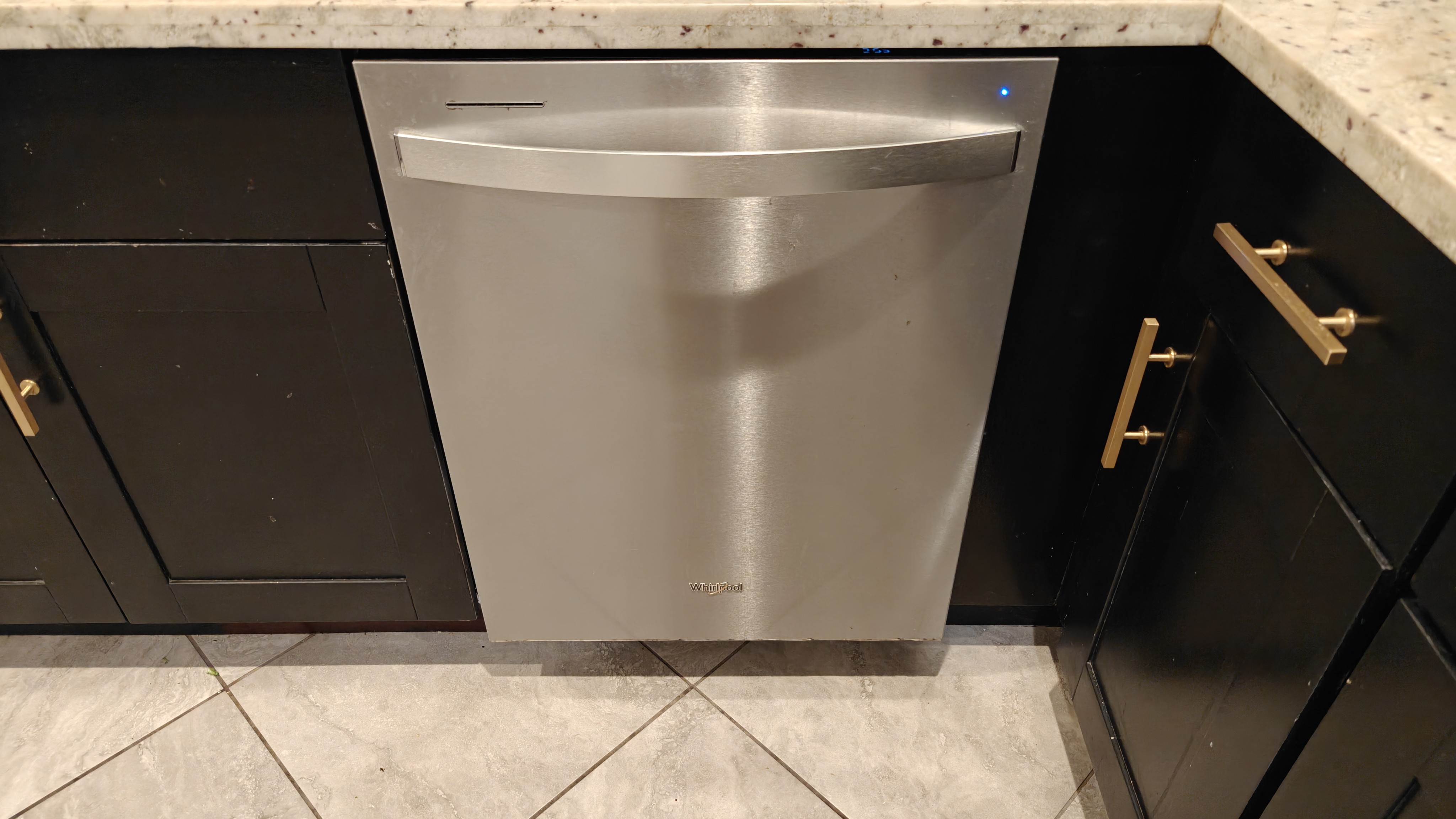How to use a washing machine with dryer: complete your whole laundry routine with a combo appliance
Expert advice on how to use a washer-dryer combo to get the best results.

There's a reason why it's considered a rite of passage to do one's laundry! It might sound self-explanatory to know how to use a washing machine with dryer, but with so many cycles to choose from, along with a variety of options for color, temperature, and fabric, plus innovative new technologies and smart features, not to mention expansive room for human error, there's a lot to learn and know about how to use a washer-dryer combo, just as there is a lot to discover about how to use a separate washing machine.
That's where we come in; at Top Ten Reviews, we have decades of expertise as writers and editors trying and testing the best washing machines, the best dryers, and the best washer-dryer combos, as well as finding the best-performing models, and fantastic deals to boot.
We've also enlisted three experts in home and laundry tech to support you as we guide you thoroughly, from start to finish, on how to use a washing machine with a dryer. Plus, we share best practices for sorting laundry and selecting the correct cycle, as well as care and maintenance for your machine to ensure it performs at its best for as long as possible.
If you're looking to discover more about using a washer-dryer combo, you're in the right place. Read on to learn more.

Joy Aumann is a licensed realtor (CIPS), interior designer and co-founder of the LUXURYSOCALREALTY team at COMPASS. 2021 and 2022 Wall Street Journal Real trends; ranked in the top 1,000 small real estate teams nationwide; two decades of luxury real estate and design experience staging homes; cited in major publications like The Wall Street Journal, Forbes, and Inc.

Judi Kutner is a licensed realtor as well as a senior contributor at Virtual Staging, the premier solution for transforming vacant property listings into captivating dream homes. She currently holds a Florida real estate license and has held a NY Mortgage Broker's license, a Florida Community Association Manager license, plus several SEC licenses during her career.

Gwil is a heated laundry and dishwasher expert with more than seven years experience and holds a particular interest in heat pump tumble dryers.
- Washing machine with dryer
- Laundry detergent
- Fabric softener (optional)
- Stain remover (optional)
- Mesh bags for delicate items (if needed)
- Measuring cup (if needed)
- Manufacturer guidelines
First things first, it's essential to understand how a washer-dryer combo works, and if you already own or use a washing machine with a dryer, get to know the make and model, and start with the manufacturer guidelines, instructions for use, and care and maintenance advice. It's always a good rule of thumb to check the specifics of your washer-dryer.
It’s also vital to learn how to separate your washing, deal with stains, load your washer-dryer, and select the correct cycles and detergents, as this can save you money on your energy and water bills and keep your wardrobe and linens fresh and hygienically clean.
Regular care and maintenance for your washer-dryer is also key, so read on to discover all our recommended expert techniques.
Sign up to receive the latest news, reviews, buying guides and deals direct to your inbox
Quick steps: How to wash clothes in a washer-dryer combo
- Sort your laundry into loads
- Check all pockets
- Pre-treat any stains
- Load the washer-dryer
- Add detergent and fabric softener
- Select the correct temperature, wash cycle, and any settings for color and fabric, plus select the spin and dry cycle
- Start the machine
- Remove your freshly clean and dry laundry
Step by step guide: How to launder clothes in a washer-dryer
1. Sort your laundry into loads
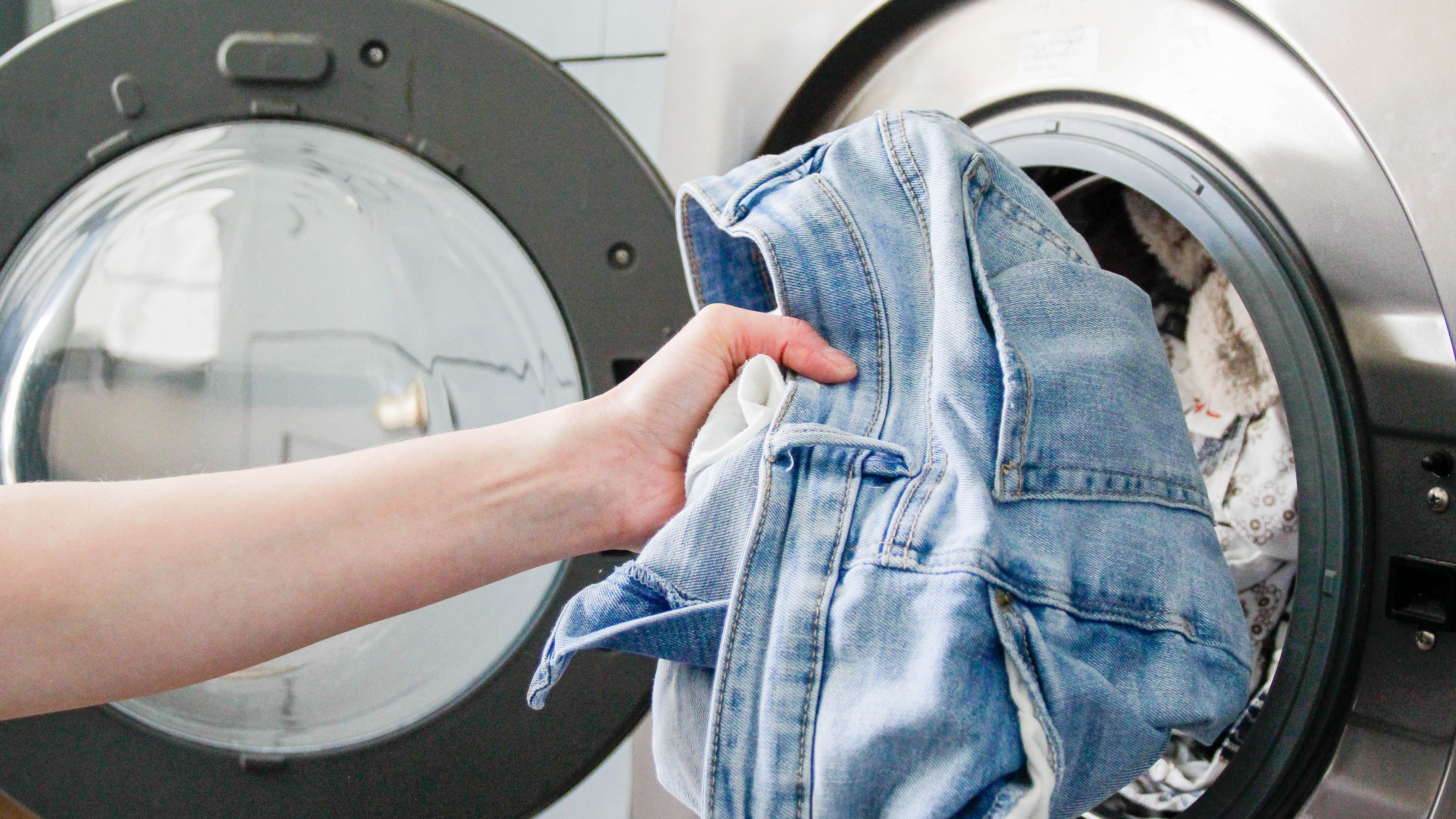
Ensure longevity for your clothes and other laundry, including towels, bedding, sheets, etc., by sorting them carefully into separate loads for washing according to fabric, color, and level of required cleaning, depending upon how soiled an item is.
You may wish to consider these categories for separate wash loads:
Whiter than whites: including white items like lightweight sheets, cotton shirts, underwear, and socks.
Lights: including light-colored or patterned items
Darks: including clothing with dark greys, black, navy, brown, and red.
Delicates: separate more delicate fabrics and pieces, including panels of fine lace or embroidery, silks, and wool, which require gentle and cool wash cycles, including lingerie and knitwear. You may wish to place smaller delicates into mesh bags.
Thick items: for thick or stiff jeans, canvas, or denim items, including jackets and skirts.
Towels/ bed linens: wash towels, large sheets, and other linen together.
Heavily soiled items: wash heavily soiled items like gardening clothes, football kits, etc.
Brights: group bright colors or items with the potential to bleed.
Sorting your laundry in one go can seem like a daunting task, however in the long term, it is preferable to keep your clothes looking and feeling great for as long as possible.
An incredible hack to save time and quickly sort your laundry as you go is to make a small one-time investment in a multiple-compartment laundry bin or basket like this laundry sorting hamper from Amazon.
You're ready to wash and dry once you’ve sorted your laundry into separate loads!
Joy Aumann advises: "Use the right cycles for your fabrics, like gentle for delicates or regular for everyday clothes, and go for a high spin speed to cut down on drying time."
2. Check all pockets
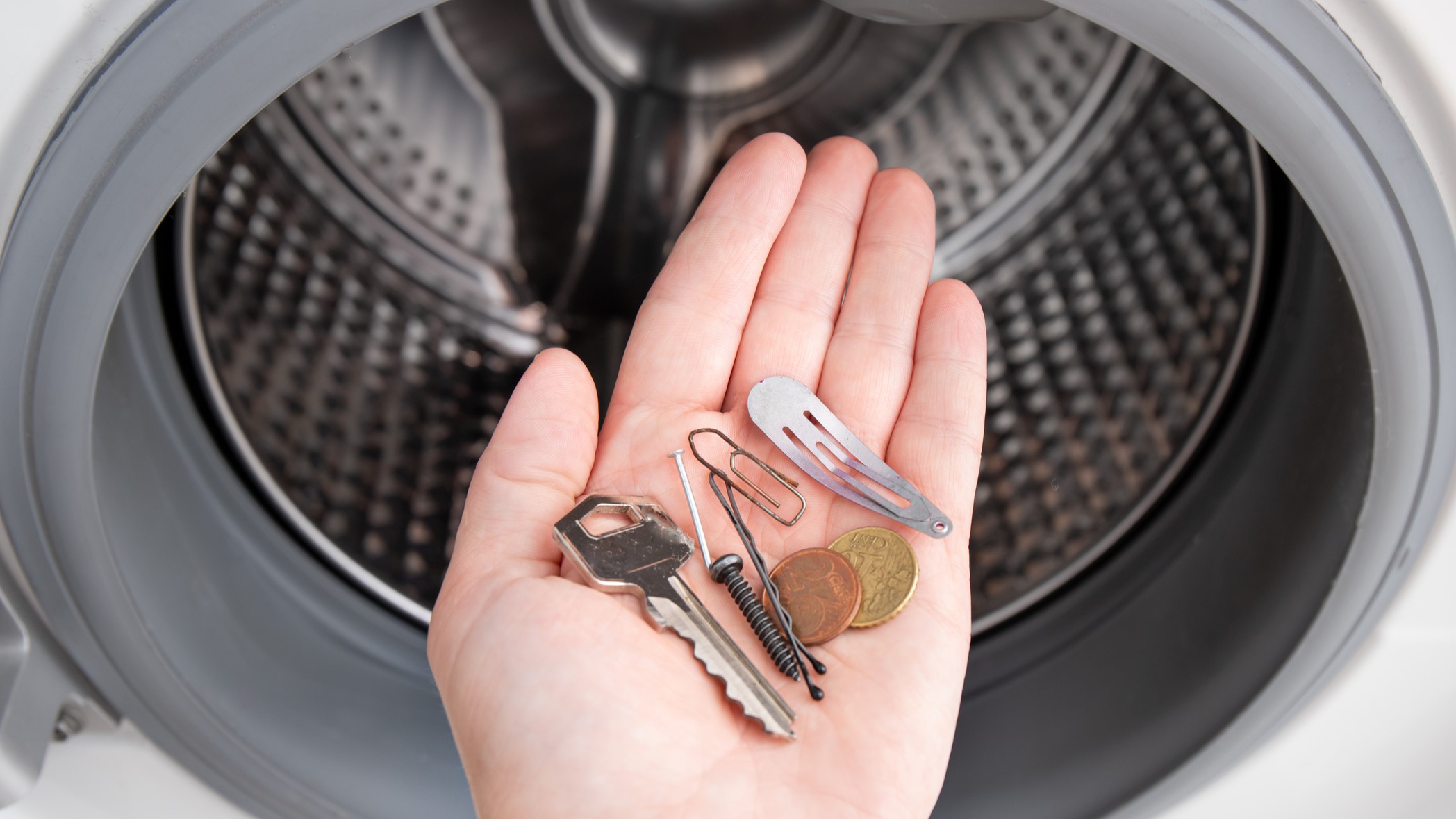
Once you've organized your wash loads into separate piles, be sure to go through and check all your pockets for any loose change, keys, expired coupons, pencils, scrunched receipts, nails or screws, used tissues, grocery lists, etc.
Metal or other hard objects can damage your washer-dryer, not to mention tear holes in the fibers of your clothing. Trust me, I speak from experience; I've had a machine break down, and in the end, we had to replace it after I failed to empty my husband's pockets of loose coins.
And we've all been there and opened up our washer-dryer to find everything covered in a white coating of residual paper fiber from those old tissues we neglected to remove from our pockets.
Not only does it leave an unpleasant mess, but the disintegrated tissue can also clog up the drains and filters, which could lead to your machine not performing efficiently.
Rouge items, such as pens, left in pockets can also cause strange stains and streaks all over your clothes.
Again, it can seem like a tedious task, but it's necessary to empty your pockets before you wash. Perhaps create the habit of checking your pockets when you throw each item into the laundry basket. Be vigilant to save yourself more hassle later.
3. Pre-treat any stains
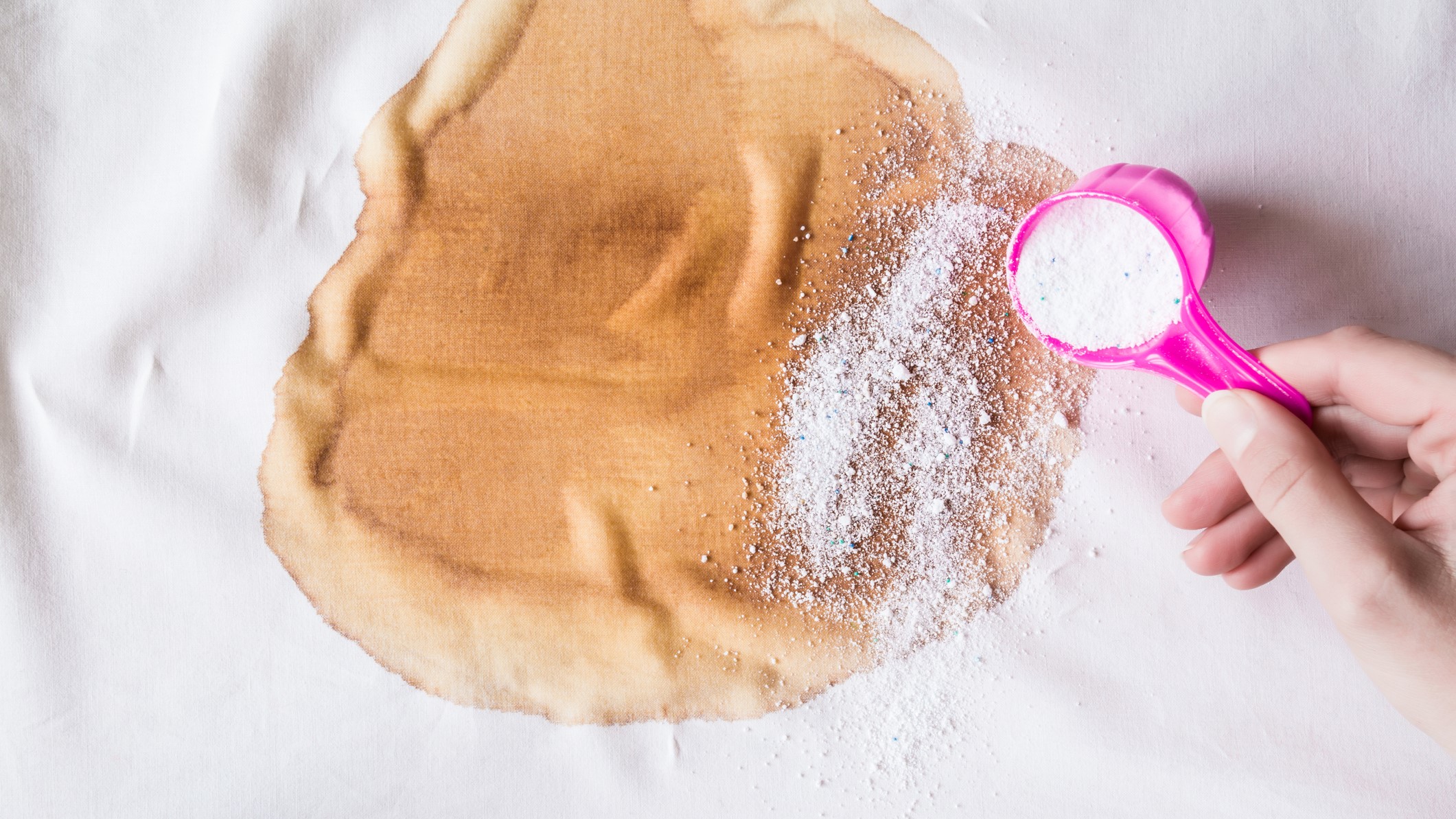
This is crucial if you have a young family, as kids' clothes can often go into the wash with food stains, paint, mud, etc. Check your clothes thoroughly for stains, particularly the whites and lighter-colored fabrics.
It's best practice to soak any stained items in cold water as soon as it happens or as soon as you notice, and it's ideal to allow the stain to soak in cold water for a couple of hours before treating them with stain removers.
A cold water soak will remove a lot of stains from tea to fruit stains, but deeper, more stubborn stains, such as red wine or coffee, may require a little more help.
Use a stain remover or detergent and directly apply it to the stain. Rub it gently and allow it to sit for a few minutes before placing the stained item in the wash.
You may also wish to add a stain remover detergent to your wash to tackle those stubborn stains further throughout the wash.
You might also opt for a natural homemade stain remover, including water, vinegar, baking soda, and lemon juice.
4. Load the washer-dryer

When loading your washer-dryer, be sure not to overload the machine. As our experts assert, the weight of a washing load will differ from the dry load weight.
Judi Kutner says: "A common mistake is expecting the dryer to handle the same size load as the washer. Most of these combos dry less than they wash."
Joy also Aumann asserts: "Don’t overload the machine—it can wash more clothes than it can dry, so you may need to remove some before drying."
"The biggest mistake is overloading. Washer-dryer combos have limits, and overstuffing them makes washing and drying less effective."
As such, it's advisable to wash only the weight you wish to dry unless you plan to remove any items you don't want to dry in the machine in between the spin and dry cycles.
Gwil Snook explains: “To keep your washer dryer running smoothly, it’s a good idea to avoid overloading the drum since drying cycles need lots of airflow. Check those care labels and pick the right program for your fabrics to prevent heat damage. "
Load your washer-dryer with the laundry and be cautious about the weight - some models will display the weight on the control panel.
Always leave space within the drum for the laundry to spin and wash properly. It's likely clothes won't wash or dry appropriately if you overload your machine. Equally, running a wash-and-dry cycle with a small load of laundry can be a waste of energy, money, and time.
Check your manufacturer's guide for your washer-dryer to check your load isn't too heavy. If in doubt, try to empty the top third of the drum.
5. Add detergent and fabric softener
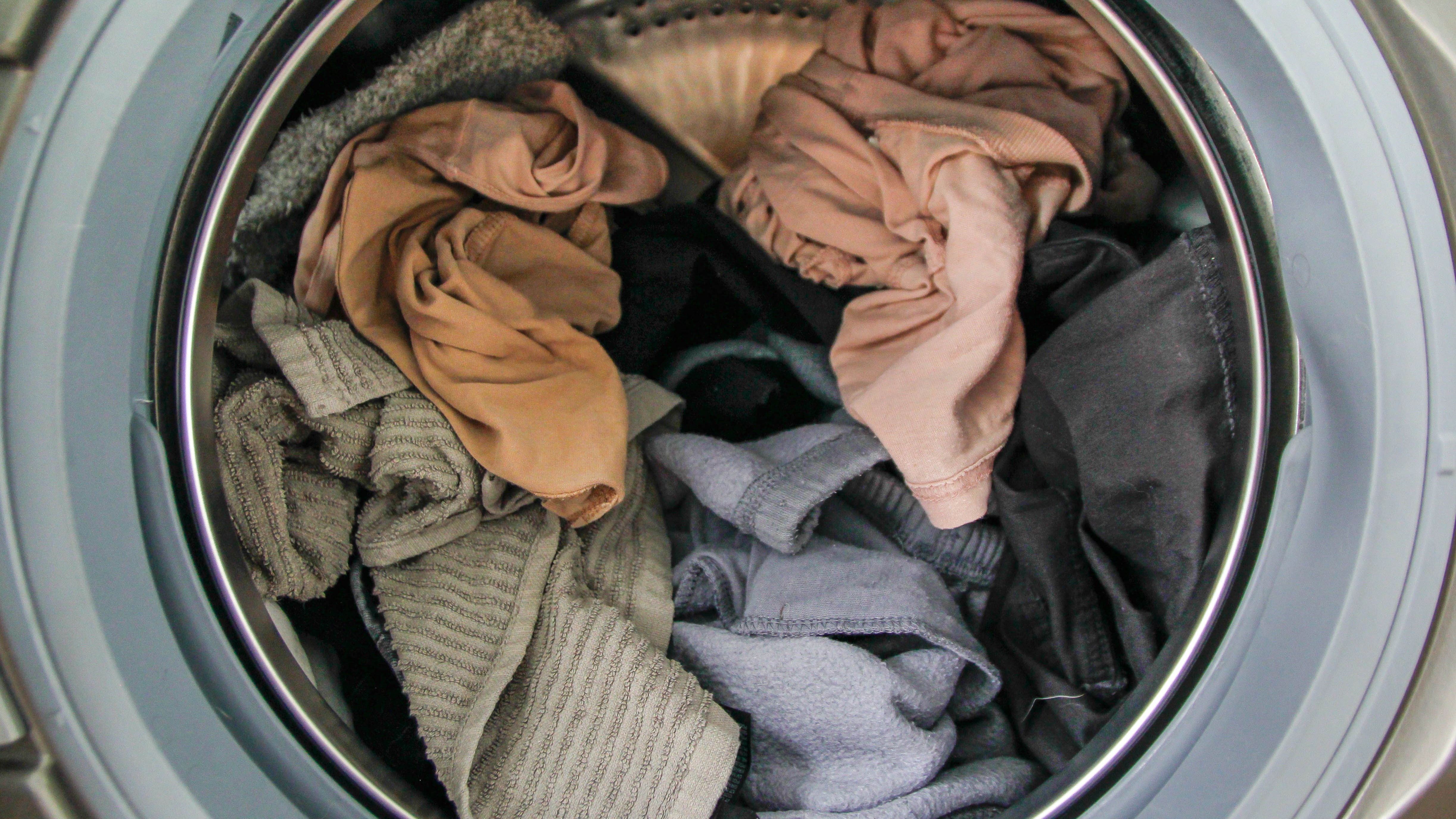
It's key to only add the required amount of detergent according to your load size, fabric, soil level, and the detergent's measurements.
Follow the manufacturer's instructions on adding detergent - most models will feature a drawer to add detergent powder, pods, or liquids. You can also add fabric softener if you wish.
Judi Kutner says: "Detergent needs to be measured properly—too much creates buildup, which causes more issues than it solves."
Gwil Snook adds: "Common hiccups like using too much detergent or mixing incompatible fabrics can affect how well it performs, so always follow the manufacturer’s instructions."
6. Select the correct temperature, wash cycle, and any settings for color and fabric, plus select the spin and dry cycle
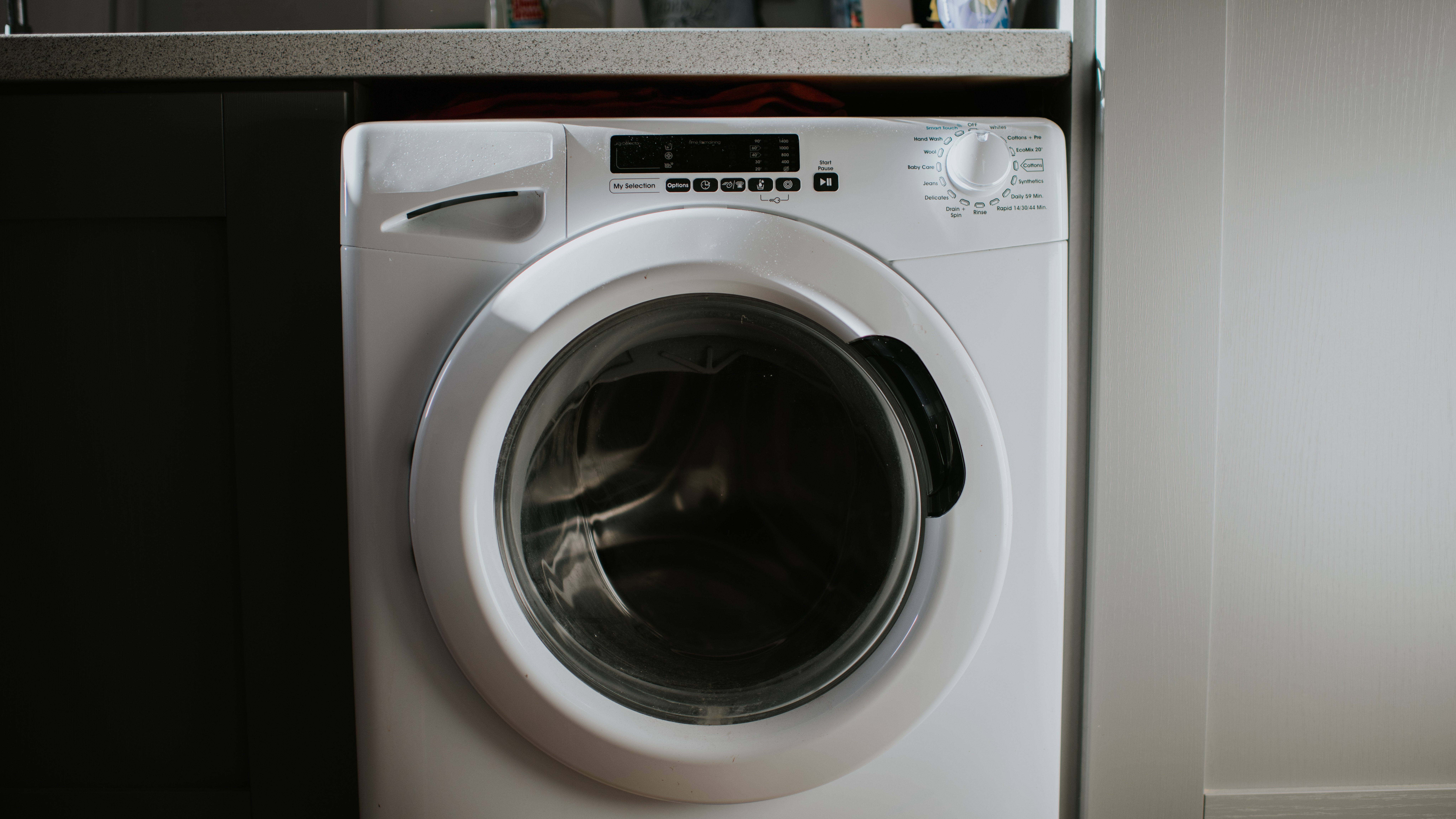
Judi Kutner advises: " Most machines have pre-set cycles for different fabrics, so pick one that matches what you’re washing. Jeans and towels need a different cycle than silk or other delicate fabrics."
Essentially, our experts agree that if the washer offers an option for the particular item or fabric you're washing, you should use it.
Many washer-dryers include preset cycles with specific temperatures for various colors and fabrics, including whites, delicates, heavily soiled, wools, etc.
If in doubt, these handy temperature guidelines are a good place to start:
Hot water (approximately 130°F or 54°C): For whites and heavily soiled items.
Warm water (approximately 90°F or 32°C): For most colored items and lightly soiled clothes.
Cold water (approximately 70°F or 21°C): For more delicate pieces such as lingerie, wool, or dark colors, and energy-efficiency.
Select a wash and dry cycle appropriate for your laundry load. You may manually program the dry cycle after the wash and spin. You may not wish to run a spin and dry wash for more delicate items. Remove any items in between the cycles, as required.
If all items in the load can be washed and dried the same way, you can enable the washer-dryer to auto-switch from wash and spin to dry and save yourself the bother of having to manually switch it. But, should you need to remove any items before the dry, having this manual setting option is handy.
7. Start the machine

Close the washer-dryer lid or door, and start the wash and dry cycle. Specific models will enable auto switch from the wash and spin to dry, so you may wish to select to operate this manually or allow the cycle to automatically complete an entire cycle.
Additional special features may include pre-wash or soak, rinse, spin, and delayed start cycles, so be sure to follow the instructions specific to your machine.
8. Remove your freshly clean and dry laundry

Once the load has completed the wash and dry cycle, the door or lid will unlock, and you can remove your laundry. Don't try to force the door, as this can cause it to break.
If you have selected a single wash cycle, you may wish to remove items to dry them on a clothesline in the garden or a clothes rack indoors for delicate items. If the items remaining in the drum are suitable for a drying cycle, put the load onto dry.
Or, if you selected a complete wash and dry cycle, your laundry should come out dry and warm. Air out any items on a clothing line or in an airing cupboard.
If your items remain wet after a full wash and dry cycle, you may wish to troubleshoot why your washer-dryer combo is not drying.
How to wash clothes in a washing machine: FAQs
How to remove stains from clothes in a washer-dryer
It's best to treat a stain as soon as possible, ideally when it occurs, or at least as soon as you notice. The quicker a stain is dealt with, the more likely it will be eradicated. Here are some best practice tips for stains to remember.
- Don’t wait to treat stains: As soon as you notice a stain, start working on removing it.
- Soak stains: Start with a sink of cold water for most stains; immerse the stained item for a couple of hours. Many stains will be removed almost entirely with this simple step.
- Identify the stain: Depending upon the stain, different techniques are required. For instance, oil-based stains require hot water to remove them, while other liquid stains can be soaked or sponged with cold water before washing.
- Pre-treat: Utilise the best stain treatment for your item before washing. Look for a stain remover for your specific type of stain. Or, opt for a natural solution, including baking soda for sweat stains, salt, or white wine for red wine stains, for instance. Treat your stain for a few minutes before the wash.
- Check care instructions: Check the item's care label before treating the stain to ensure that the stain remover and temperature of the wash you intend to use are appropriate for the item and fabric.
- Select appropriate washer temperature: Depending upon the type of stain, you will need to select the proper temperature for the washer dryer. Hot water is ideal for oil-based stains, and warm water is best for others.
- Use heavy-duty cycle: If your washer boasts a pre-soak or heavily soiled cycle to tackle stubborn stains, use it. Joy Aumann advocates: "If your machine has auto-settings, let it do the work, but always double-check for delicate items. It’s all about matching your load to the machine’s capabilities."
- Repeat if required: If the stain remains, repeat the removal process, including treatment and a subsequent wash. Finally, dry the garment outdoors in sunlight, which will help remove stains on white or light fabrics. The dryer will set any residual stains, so avoid this step.
How do washer-dryers work
Discover how washer-dryers work in our guide. Essentially, washer-dryers perform two functions: a wash and a dry cycle in one drum, utilizing water, detergent, agitation, spinning, rinsing, and drying to launder your clothes. Washer-dryers tend to be more cost-effective than separate machines, and they are very convenient for those with limited space, but they require care and maintenance to maintain a good working order.
Joy Aumann explains: "A common issue is ignoring maintenance—skipping cleaning cycles or not checking filters can lead to problems down the road."
"The price for washer-dryer combos varies widely. Basic models start around $800, while premium ones with advanced features like sensors or smart connectivity can go beyond $3,000. Consider your needs—capacity, energy efficiency, and features—before deciding. Spending more on the right model can save you money in the long run."
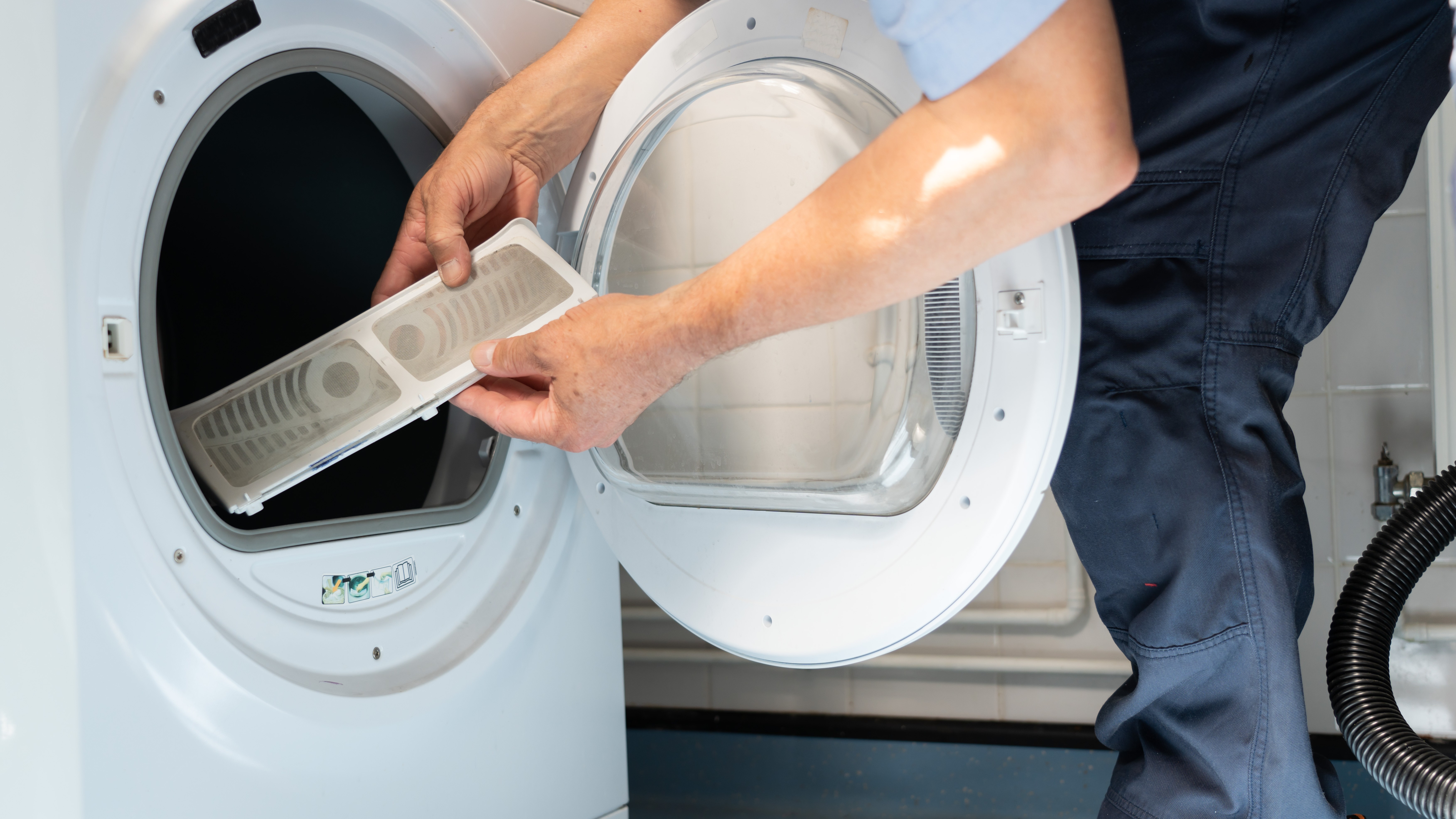
How to clean a washing machine
It's arguably even more critical to carefully maintain and care for your washer-dryer than separate washers and dryers because your washer-dryer has dual functionality, and you want to ensure its longevity for as long as possible.
It’s common for washer-dryers to develop a build-up of residue from dirty laundry, detergent, and fabric fibers, as well as unpleasant odors and musty smells after prolonged use. The drum and all internal compartments require regular cleaning and maintenance to avoid developing mold, bacteria, and mildew.
Joy Aumann advises: "Keeping your washer and dryer clean is essential for it to work well. Run a cleaning cycle now and then to clear out detergent buildup. Wipe down the detergent drawer and check the drain filter regularly—it may not have a lint trap, but the filter can still get clogged. A clean machine means better performance and fewer odors, so don’t skip this step."
AO laundry expert Gwil Snook adds: "Regularly cleaning your washer and dryer will ensure that it keeps performing at its best. There are a few quick and easy steps that you can follow to make sure it’s kept in tip-top condition.
"Clean the detergent drawer and filter to remove detergent residue and lint."
"Run a maintenance wash with an empty drum using a washing machine cleaner or a mix of white vinegar and baking soda. Top tip: Don’t forget to wipe the drum, door seal, and exterior with a damp cloth."
You may wish to consult our guide to thoroughly clean the drum of a washing machine.
Final thoughts
It's vital to follow these steps to ensure the longevity of your washer-dryer and clothes. Always sort your laundry before you wash according to color, fabric, and soil level.
Reviews
Whirlpool 24" Stainless Steel AI Dishwasher Review
Napoleon TravelQ PRO285 Portable Gas Grill review
Dreame L40 Ultra Robot Vacuum Cleaner and Mop review: almost hands-free cleaning
GE Profile Smart Mixer with Auto Sense review: a powerful, thorough mixer
Echo eForce DPB-2500 review: a leaf blower as a snow removal tool?
DPAS-2100 + Pro Paddle Attachment review: a new way to remove snow this winter?
Midea MAD53109APK 5.5QT Air Fryer review: a small, simple, and highly effective option
Eureka J15 Pro Ultra Robot Vacuum review: hands-free cleaning for busy families
Check your pockets and pre-treat any stains before selecting the correct wash and dry cycle. Ensure you add the proper amount of detergent per wash.
Keep your washer-dryer in tip-top condition by regularly washing the machine to prevent the buildup of dirt, residue, detergent, or odors.
By following these tips and tricks, you can be sure to keep your washer-dryer working well for you and your clothes for as long as possible.

Emily joined the team as a Homes Editor at Top Ten Reviews in 2024. With 15 years of experience copywriting and editing content for printed and digital media platforms across publishing, e-commerce, and social media, Emily specializes in writing about home, lifestyle, and health. Having worked for publications and brands including Harper’s Bazaar, Cosmopolitan, House of Fraser, National Trust, and more, Emily is passionate about pursuing many sources of inspiration. She lives with her husband, two children, pug Coco, cat Smokey, and three Guinea Pigs in Devon, England. Other than spending time in the great outdoors with the family, she loves nothing more than finding a great discount on a high-ticket product.
